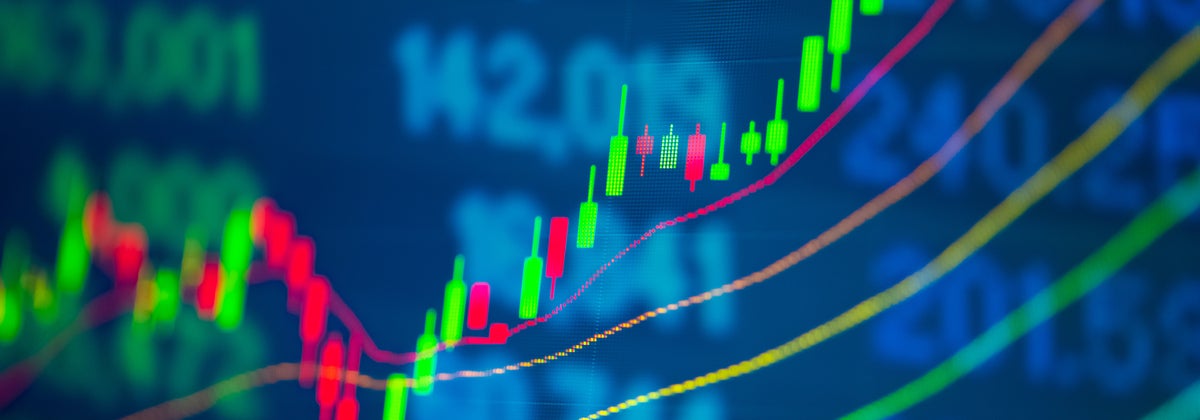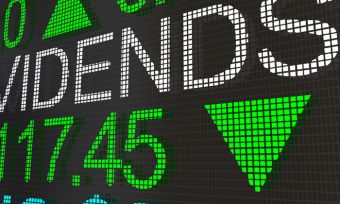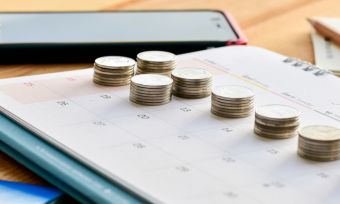Author: Michael Lund
When you invest in shares, you are effectively buying into a share of a company listed on a sharemarket. The hope is that the share price will go up and you may be able to tap into a share of any profits that company pays in dividends.
But buying whole shares has some limitations. While some shares are relatively cheap, and you can buy them for just a few cents each, others can be expensive and cost several hundred dollars each. Some overseas share prices can even be in the tens of thousands of dollars, just for one share.
Berkshire Hathaway Inc’s Class A share is famously the most expensive share in the world. It’s currently worth well over US$450,000 per share. And for most retail investors, they can’t afford that.
So should you consider buying a fraction of a share instead?
What is a fractional share?
A fractional share is exactly that: it’s a part of a share in an investment. For example, if a company’s share price is $100 and you only have $25, then you can buy just a quarter (25%) of a single share for $25. Other fees and charges may apply.
There are a few platforms that allow you to buy a fractional share in a company or managed fund here in New Zealand or overseas.
For example, the share trading platform Sharesies says you can invest as little as 1c in a fractional share of a company or exchange-traded fund (ETF) listed on the New Zealand, Australian or the United States sharemarkets.
In practice, you’d probably be looking to invest more than that, but the point made by the trading platform is that you can buy a fractional share in a company, well below what a single share may cost.
Compare Online Share Trading Platforms
Whatever platform you use to buy into fractional shares, factor in any upfront and ongoing fees and charges when making an investment, and read the terms and conditions. Check also to see if any relevant Product Disclosure Statements (PDS) and Target Market Determination (TMD) documents may apply.
Who owns the fractional share?
Typically, when you buy shares in a company you become the registered owner of those shares. That’s not always the case with fractional shares.
When you initiate a trade for a fraction of a share, the broker buys the whole share and makes an entry in your brokerage account reflecting the value of your ownership.
For example, if you invest your $25 dollars in a company with a current share price of $100, your brokerage account will show that you own a 0.25 share of that company. The broker retains ownership of the other 0.75, which it can use to distribute out to other fractional investors.
The key thing here is that you don’t personally own that fraction of a share in your name.
Your fractional ownership is typically facilitated through a custody arrangement, where the broker is the registered owner of the whole share and you, the investor, are the beneficial owner. This means your money and investments are held on trust for you by the legal owner.
That’s the case with Sharesies, which says any investment you buy via its platform is held by the New Zealand registered company, Sharesies Nominee Limited. But you’re still entitled to the economic value and other benefits attached to your shares.
That type of arrangement is typical for fractional shares, but it can have its downsides.
As you are not the legal owner of the shares, you might not be able to transfer them to a different broker, or into your name, if you wish to do so at a later date.
This may mean you would need to sell the shares and repurchase them if you wanted to change brokers, which would likely have tax implications.
Is it a good idea to buy fractional shares?
Whether it’s a good idea to buy fractional shares depends on factors such as your circumstances, what you can afford and the risks you are prepared to take.
Investing in fractional shares comes with the same potential risks and benefits of owning any shareholding, no matter the size. A share price may rise or fall, for example, and it may pay a dividend or it may not.
The ability to invest a small amount makes it accessible, but the platform needs to recoup costs. And it will do that through fees, sponsorship, advertising, selling data etc.
So how does that balance out for the client?
Again, that’s why it’s important to check the fees and charges and read the fine print, irrespective of your choice in investment platform. Any ongoing regular fees or charges could quickly eat away at your account, especially if you only have a small amount to invest in a fractional share portfolio. It’s also important to consider any currency conversion rates and fees when investing in overseas shares.
That said, fractional investing is a good way for people to start investing and tap into some of the more expensive stocks, such as Google and Amazon. Fractional investing can also make diversification in your investments possible at a lower cost than traditional full-price share investing. It also allows you to split limited capital over a wider range of shares.
For example, instead of buying a single share in a single company for $25, you could instead invest $5 each in five different companies.
The overall interest in new app-based and online trading platforms indicates that getting involved in share investing, either fractional or otherwise, can help to build familiarity and confidence through possibly easier and more accessible means than traditional brokers.
Can I get rich from fractional shares?
You may make money if the share price goes up, but given you are investing in a fractional share, you will only benefit from a fractional proportion of any price rise.
Consider this hypothetical scenario: You paid $25 for a 25% fractional share that was valued at $100 full price and say the share increased to $110. If you decided to sell, you would only get a 25% of that $10 increase, which would be $2.50, excluding any fees or charges you may also have to pay.
The same applies to any dividend a company pays out. You only get a fractional amount based on your fractional ownership.
But there’s always the risk that you could lose some or all of your money, too, including through fees and charges related to your fractional share investments.
With any investments, keep in mind past performance is not a reliable indicator of future performance.
Is there a downside to buying fractional shares?
Many of the risks associated with buying a fractional share are the same as if you bought a full share. Share prices can go up and down and no one can tell you which way they will go on any given day. Markets can also crash.
However, since fractional investing makes it easier to diversify your investment, and you’ll likely be investing less capital than other investors, it could lower your overall risk.
Remember, too, though that with lower risk, you may also get lower profits due to your fractional ownership, and not all of the investments may be profitable.

About the reviewer of this page
This report was reviewed by Canstar Content Producer, Andrew Broadley. Andrew is an experienced writer with a wide range of industry experience. Starting out, he cut his teeth working as a writer for print and online magazines, and he has worked in both journalism and editorial roles. His content has covered lifestyle and culture, marketing and, more recently, finance for Canstar.
Enjoy reading this article?
You can like us on Facebook and get social, or sign up to receive more news like this straight to your inbox.
By subscribing you agree to the Canstar Privacy Policy




Share this article